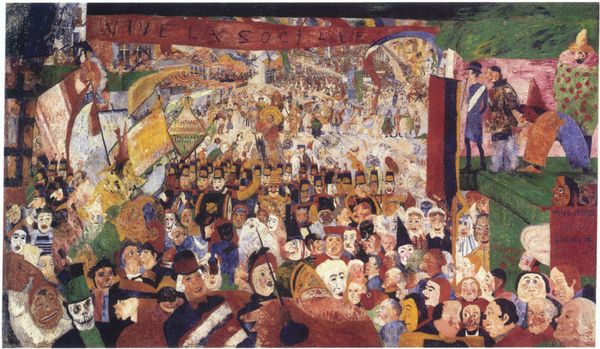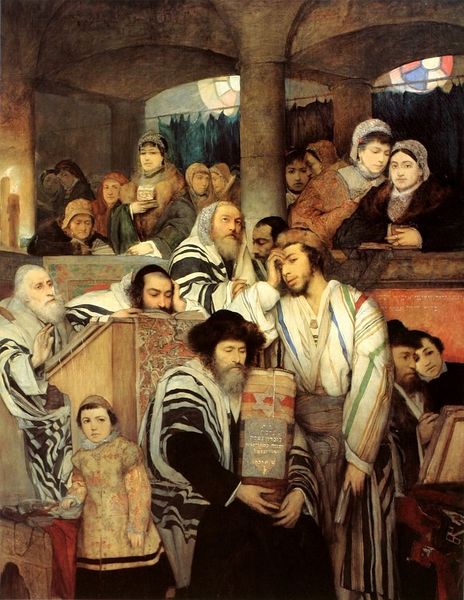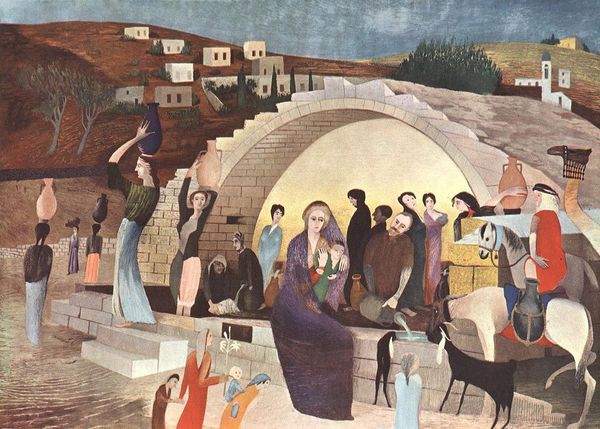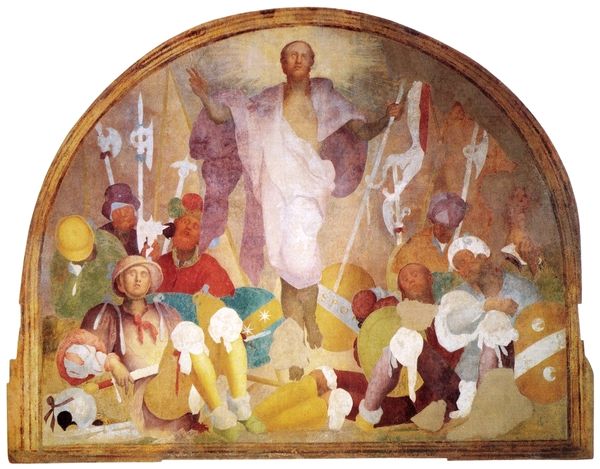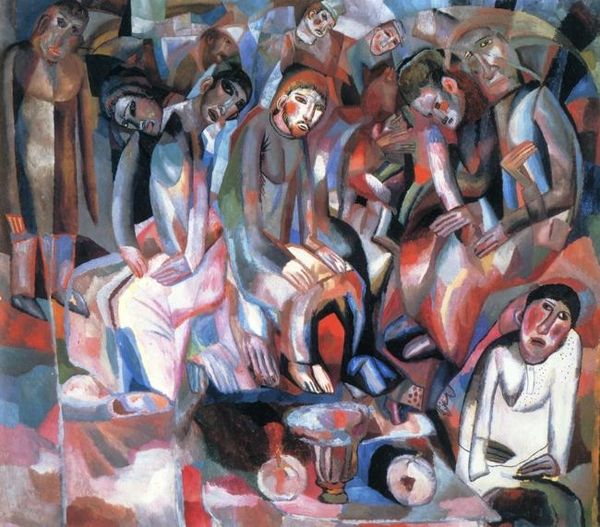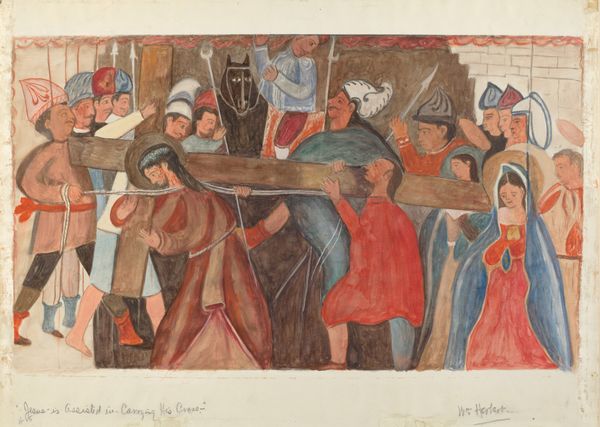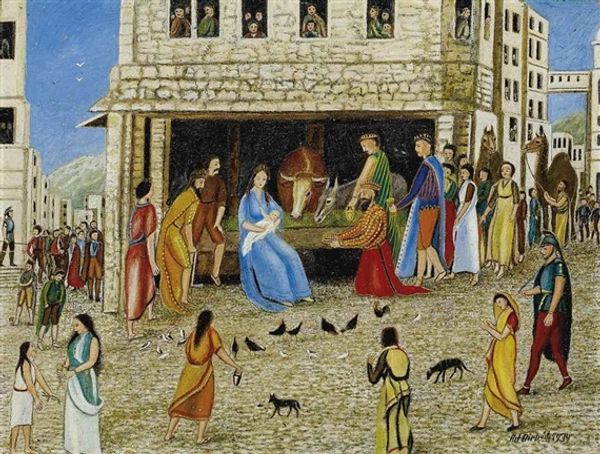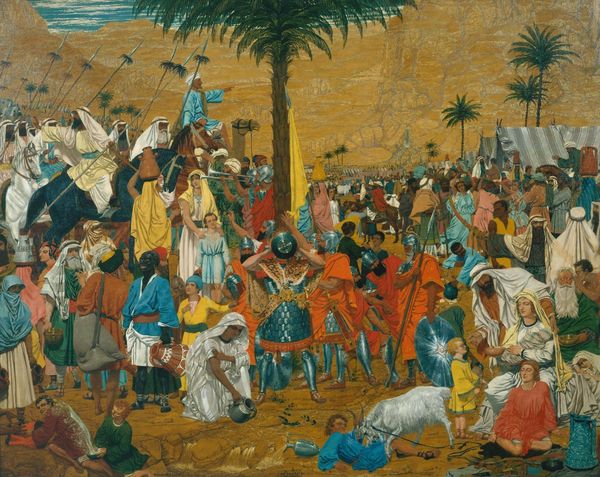
Copyright: Public domain
Curator: Look at this remarkable work, “At the Entrance of the Wailing-Wall in Jerusalem,” painted in 1904 by Tivadar Kosztka Csontvary. It’s rendered with oil-paint, showcasing a dense crowd of figures. Editor: My first impression is one of solemnity, but also great intimacy. There's something incredibly evocative about the sheer number of people gathered there. The artist definitely wants to convey an inclusive message of a public site for all. Curator: Absolutely. And if we unpack it further, it can definitely offer insight into identity. The artist, of course, coming from a position of Jewish heritage, captures not only a moment of historical and religious significance, but also one laden with potential sociopolitical meanings of nation and belonging. Consider how this scene both reflects and potentially challenges existing power structures of the time. Editor: That is what I find particularly compelling about this work, how the faces in this crowded painting seem to search out toward the viewer, almost inviting dialogue with the canvas. It strikes me, too, how he positions the children towards the front of the composition as symbols of hope for future generations and continuity of traditions. The wall itself is quite subtle isn’t it? Like cultural memory slowly fading… Curator: Precisely. The painting blends impressionistic style with Orientalist themes prevalent at the time. He's documenting, arguably through a somewhat romanticized lens, a culture grappling with issues of preservation amidst a changing political climate. The positioning of the children at the front may not only point toward futurity but also the vulnerability of a group potentially under threat. Editor: It makes me wonder about the role that places play in reinforcing and performing social roles and religious continuity for people who gather at sacred sites such as the Wailing Wall. It’s about remembering traditions and history—both sacred and traumatic. Curator: It really pushes us to investigate not just the artist’s subjective experience, but how his vision resonates—or clashes—with other narratives of identity. Editor: A deeply affecting look at place, people and faith that opens up much-needed discussions even today. Curator: Yes, a really thoughtful and impactful encounter.
Comments
No comments
Be the first to comment and join the conversation on the ultimate creative platform.

